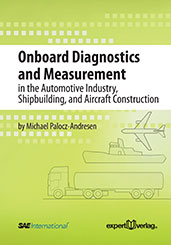Book

Engine Emissions Measurement Handbook
2013-11-12
The subject of engine emissions is expected to be at the forefront of environmental regulations and consumers’ concerns for years to come. As technology develops to comply with new and different requirements in various regions of the world, understanding the fundamental principles of how engine emissions occur, and how they can be properly measured, is vitally important. Engine Emissions Measurement Handbook, developed and co-authored by HORIBA Automotive Test Systems team addresses the main aspects of this subject. Written with the technical user in mind, this title is a must-have for those involved in engine development and testing, and environmental researchers focusing on better ways to minimize emissions pollution.




